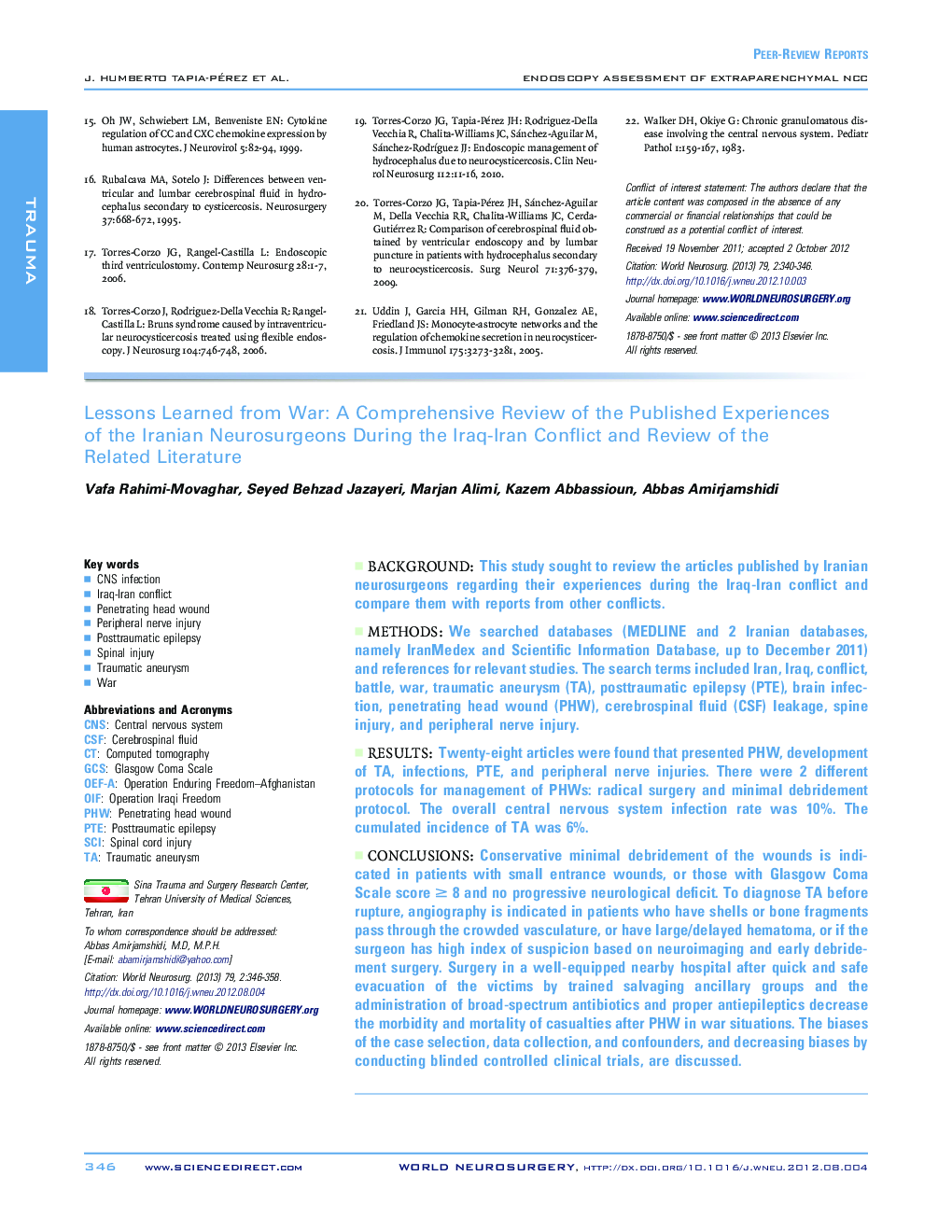| Article ID | Journal | Published Year | Pages | File Type |
|---|---|---|---|---|
| 3096578 | World Neurosurgery | 2013 | 13 Pages |
BackgroundThis study sought to review the articles published by Iranian neurosurgeons regarding their experiences during the Iraq-Iran conflict and compare them with reports from other conflicts.MethodsWe searched databases (MEDLINE and 2 Iranian databases, namely IranMedex and Scientific Information Database, up to December 2011) and references for relevant studies. The search terms included Iran, Iraq, conflict, battle, war, traumatic aneurysm (TA), posttraumatic epilepsy (PTE), brain infection, penetrating head wound (PHW), cerebrospinal fluid (CSF) leakage, spine injury, and peripheral nerve injury.ResultsTwenty-eight articles were found that presented PHW, development of TA, infections, PTE, and peripheral nerve injuries. There were 2 different protocols for management of PHWs: radical surgery and minimal debridement protocol. The overall central nervous system infection rate was 10%. The cumulated incidence of TA was 6%.ConclusionsConservative minimal debridement of the wounds is indicated in patients with small entrance wounds, or those with Glasgow Coma Scale score ≥ 8 and no progressive neurological deficit. To diagnose TA before rupture, angiography is indicated in patients who have shells or bone fragments pass through the crowded vasculature, or have large/delayed hematoma, or if the surgeon has high index of suspicion based on neuroimaging and early debridement surgery. Surgery in a well-equipped nearby hospital after quick and safe evacuation of the victims by trained salvaging ancillary groups and the administration of broad-spectrum antibiotics and proper antiepileptics decrease the morbidity and mortality of casualties after PHW in war situations. The biases of the case selection, data collection, and confounders, and decreasing biases by conducting blinded controlled clinical trials, are discussed.
